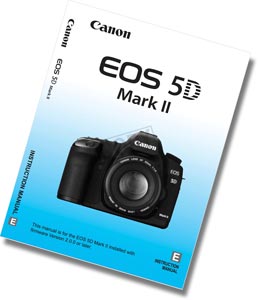Reading the Manual?
Ok, I admit it. I do read the manual. There it’s out in the open for all to see. But then why wouldn’t someone read about the features that they have just laid out a lot of money to buy. That never made sense to me. Sure it was alright I suppose many years ago in the film days when cameras and equipment were non-electronic. You had a shutter, aperture ring, focus ring, depth of field and mirror lock up buttons. Each button had a function and they were simple to figure out what they did.

Today we are in a different time. Once electronics took over photography there are more settings and buttons and button sequences than you can keep track of without a manual. My camera has custom function settings. There are 70 different settings available. In the manual the custom function settings start on page 193. That is a lot of information before even getting to the settings section.
So why wouldn’t you read the manual? Well, one reason is that the manuals are often really hard to read. The are obviously written by a technician who is throughly entrenched in the company jargon-speak. The language and thought process is difficult to follow. In many instances the translation becomes really stilted. I never understood why companies that spend so much in producing a product falter at the last step in the communication chain. If you are a manufacturer reading this let me suggest that you spend a few dollars and have writers in the different languages rewrite your manuals to make them flow.
One alternative which I use from time to time is to buy a third party book about the equipment in question. This has two advantages: it is usually written by someone who speaks your language and it is often written by a photographer who knows his or her audience and what they are trying to do with the product in real life.
When I buy a new camera (or other piece of equipment) I usually follow this process. I read the manual starting carefully at the beginning and then picking up speed. Those features that I know I’ll never use I still skim over just to know what it will do. Unless I will be using a feature very soon I don’t bother reading the detailed step-by-step instructions. I’ll never remember the steps so why bother to take the time reading. When I need to use the feature then is the time to go back and go through it slowly. When I’m done I will often revisit the important parts and read it again in more detail.
Sometimes I will purchase a third party book about the device even before I buy the hardware. This allows me to be ready to use the equipment as soon as it’s in my hand. At other times when the manual is particularly bad I buy the book to replace the manual. When I’m selling a used piece of equipment I always include any books about it as a value added feature. This clears my book shelf for more materials.
Finally I make sure I carry all the manuals with me in the field. I carry not only my camera manual but the manual for all my lenses and other gear as well. No need being five hundred miles away and not knowing how to activate a feature. I don’t carry the paper manuals because they would weigh almost as much as the photo gear. What I do is to download the manufacturer’s manuals onto my iPad. All the manuals are kept in one collection in iBooks ready to read wherever I’m at. If you have ever tried to figure out a setting on your flash in the field you will find this an invaluable tool.
To summarize: read your manual and have at least a passing familiarity with the features on your equipment. Take the manuals with you electronically. Don’t be afraid to buy the how to use books available for your equipment since they will often teach you how to improve your photography as well.
Enjoy,
Bob